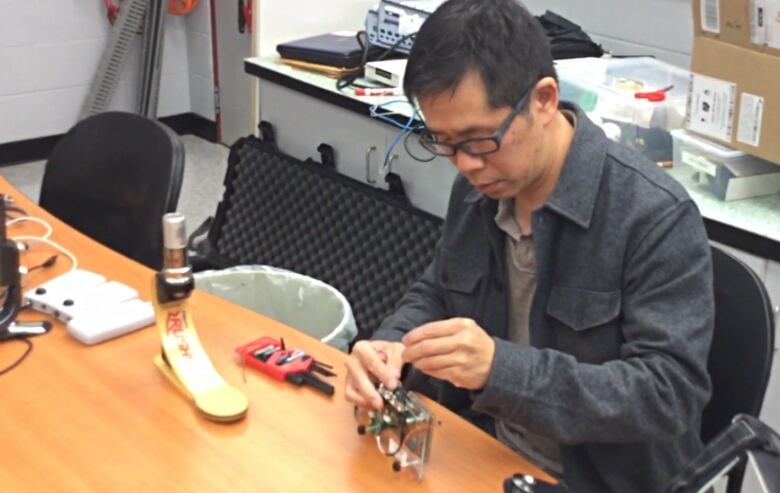Smart prosthetics aim to improve mobility for stroke patients, amputees
Device aims to reduce energy used while walking with prosthetic limb

A wearable tech implant could make getting around easier forpeople with prosthetic legs, say researchers at the University of Calgary.
Kinesiology professor Art Kuo is examining how to usesensors,similar to those found in activity trackers, to help stroke patients, people with Parkinson's and those who wear lower-leg prosthetics.
Kuo says people with artificial legs typically exhaust 30 per cent more energy than able-bodied people when walking.
"For amputees, it puts a damper on their daily living, or reduces the times they'll get up and run an errand or reduces the amount of activity they have," Kuo said.
Older prosthetics use springs
His research aims to close that gap by implanting prostheses with a kind of smart technology that can sense what part of the gait cycle a person is in. Motors in the artificial limb would use that information to more effectively capture and release energy that would otherwisebe lost.
Older prosthetics, built with springs, attempt to provide some shock absorption if the wearer lands on hard pavement.

The springs are designed to store and return energy to the body, much the way an ankle does, but most prosthetics provide little control over how that energy gets stored or when it isreturned to the wearer.
"What we do is we control that energy. We're able to store it for however long we like, and then we have a means of releasing it in a way that is similar to how a person normally uses their intact ankle," Kuo said.
Future plans
Kuo hopes these new advancements will have positive effects on people's fitness and activity levels.
"Someone who might not normally be interested in hiking might then be quite happy to go on a long walk or a hike if it's economical or if it's comfortable for them," he said.
But he says his research prototypes still have to be tested, fine-tunedand manufactured before they can make it to market.
Kuo says he's seen good results with the prototypes he's been testing, and he hopes to partner with a prosthetics company in the future to hopefully make the technology available commercially.
With files from Shannon Scott












_(720p).jpg)


 OFFICIAL HD MUSIC VIDEO.jpg)
.jpg)



























































































